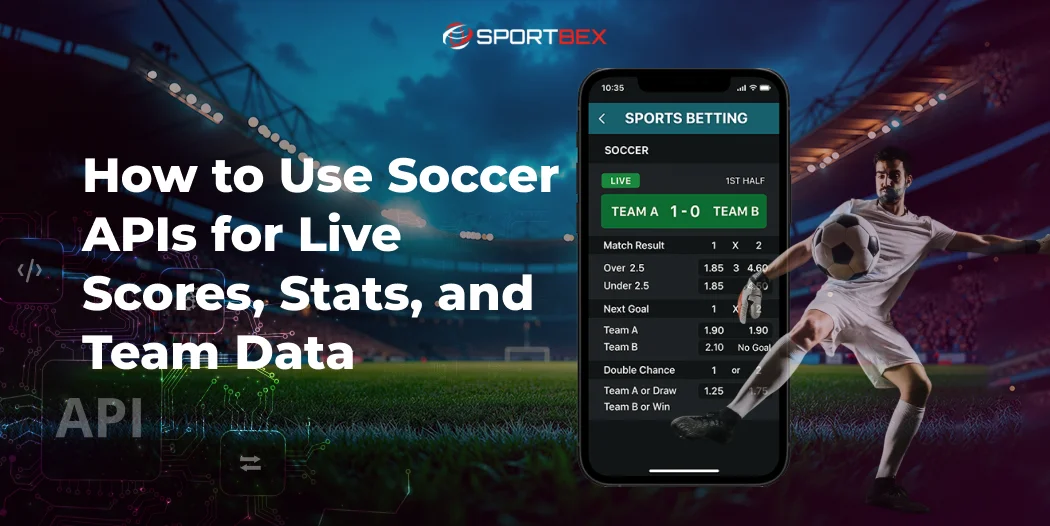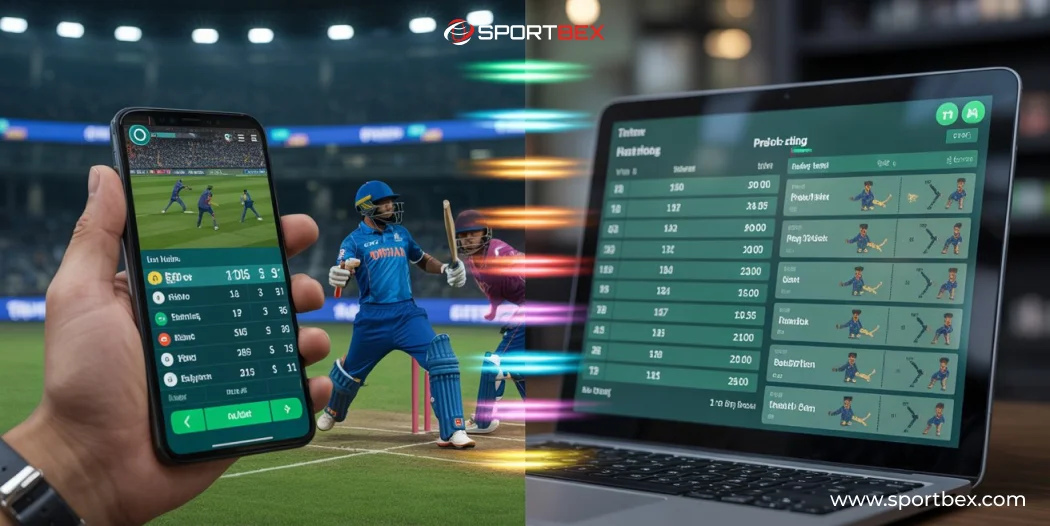Soccer stands as the world’s most beloved sport, captivating billions of fans who crave real-time updates, detailed statistics, and comprehensive team information. Whether you’re developing a fantasy sports platform, creating a live score application, or building an analytics dashboard, accessing reliable soccer data has become essential for any sports-related project.
This demand has created a thriving ecosystem of Soccer API that provide the tools needed to build engaging, data-rich applications.
From the English Premier League to local amateur competitions, APIs aggregate data from multiple sources and deliver it in standardized formats that developers can easily integrate into their applications.
How to Use Soccer APIs for Live Scores, Stats, and Team Data becomes clear when you realize that these APIs offer seamless access to real-time soccer information, enabling developers to easily incorporate live scores, player statistics, and team data into their apps.
What Is a Soccer API?
A Soccer API is a service that delivers real-time football data in a structured format, such as scores, player stats, match events, and team information. You can integrate accurate and up-to-date soccer data into your platform, whether it’s a live score app, fantasy sports game, or analytics dashboard.
Soccer APIs also enable platforms to provide historical match data, league standings, and player performance trends, allowing for more detailed analysis and insights.
Why Use Soccer APIs?
The decision to implement Soccer APIs in your application development process stems from several compelling advantages that traditional data collection methods simply cannot match. Understanding these benefits will help you appreciate why APIs have become the standard for sports data integration.
They enable seamless integration with apps like live score platforms, fantasy leagues, and sports analytics dashboards. Additionally, APIs help your platform scale efficiently, reduce development time, and enhance overall user engagement.
Key Features to Look for in a Soccer API
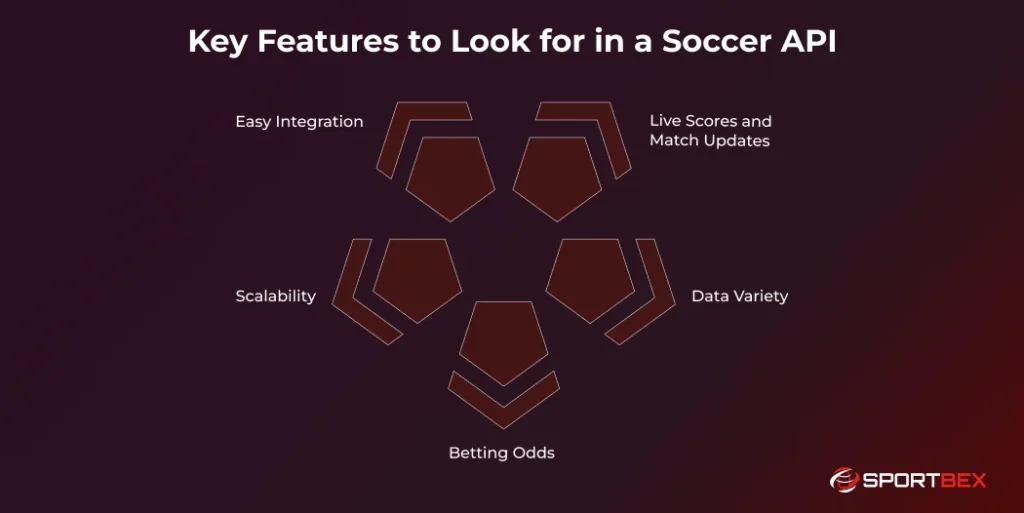
Live Scores and Match Updates
The foundation of any quality soccer live score api lies in its ability to provide real-time match information with minimal delay. Look for providers that guarantee update frequencies of 30 seconds or less for live matches.
Data Variety
Modern soccer applications require diverse data types to satisfy user expectations and enable advanced features. Player statistics should encompass career histories, seasonal performance metrics, transfer information, and injury status.
Betting Odds
For applications targeting betting markets or fantasy sports platforms, integrated betting odds provide significant value. Sports Betting Odds API and live score soccer API providers often include real-time odds from multiple bookmakers, allowing users to compare betting options without leaving your application.
Scalability
Your chosen API must handle your application’s current needs while accommodating future growth. Evaluate providers based on their rate limits, concurrent request handling, and infrastructure capacity.
Easy Integration
Technical documentation quality significantly impacts development speed and implementation success. Look for providers that offer comprehensive documentation, code samples in multiple programming languages, and interactive API explorers that allow testing before implementation.
Common Use Cases of Soccer APIs
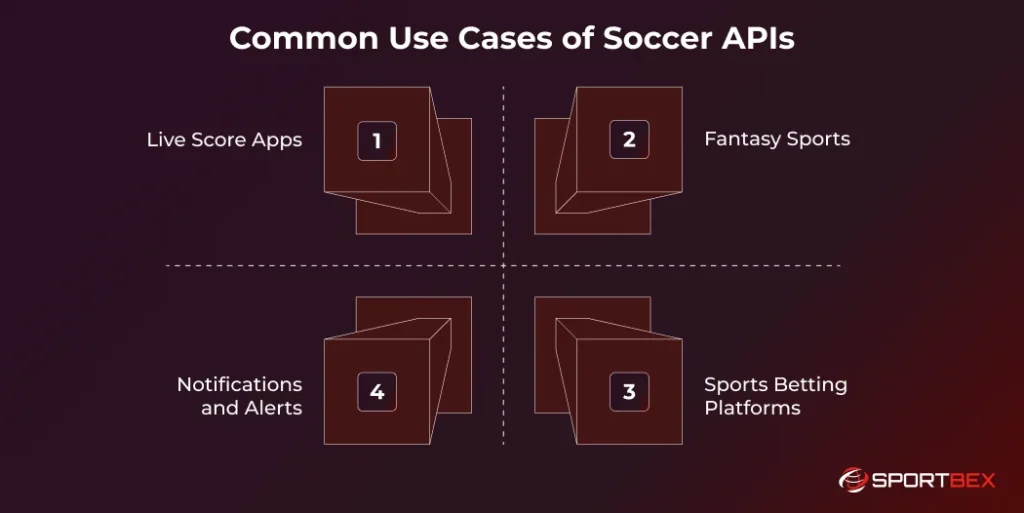
Live Score Apps
Live score applications represent the most straightforward implementation of soccer APIs, yet they require sophisticated backend systems to deliver the real-time experience users expect.
Modern live score apps implement push notification systems that alert users to significant events in matches they’re following. These notifications must be carefully timed and filtered to avoid overwhelming users while ensuring they receive updates about matches and teams they care about most.
Fantasy Sports
Fantasy soccer platforms require extensive player performance data to calculate scoring systems and provide users with the information needed to make informed decisions. Soccer Prediction app functionality often integrates with fantasy features to help users select optimal lineups based on statistical projections.
Player evaluation systems in fantasy applications must consider various performance metrics, including goals, assists, defensive actions, and disciplinary records. The complexity of modern fantasy scoring systems demands comprehensive data that goes far beyond basic match statistics.
Sports Betting Platforms
Sports betting applications require the integration of real-time odds data alongside comprehensive match and player statistics to inform betting decisions. The combination of live match data with current betting odds creates dynamic user experiences that encourage engagement throughout match duration.
Risk management systems on betting platforms utilize API data to identify unusual betting patterns and potential issues that may indicate match manipulation or other irregularities. This application of soccer data serves regulatory compliance and business protection purposes.
Notifications and Alerts
Customizable notification systems allow users to receive targeted updates about specific teams, players, or match events. The challenge lies in providing relevant notifications without overwhelming users with information they don’t value.
Smart notification systems analyze user behavior patterns to optimize alert timing and content. Machine learning algorithms can identify which types of notifications drive engagement versus those that lead to notification disabling or app uninstalls.
How to Use a Soccer API: A Step-by-Step Guide
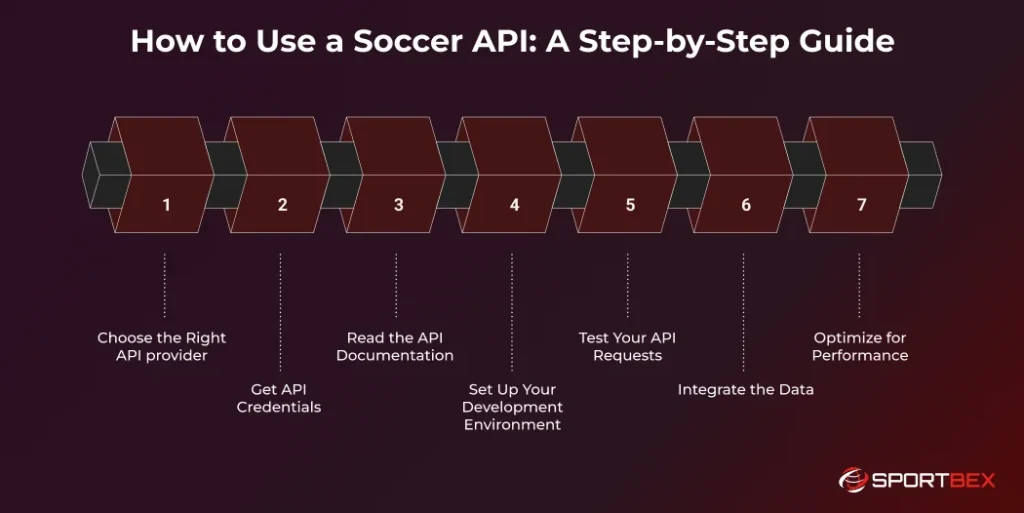
Successfully implementing and integrating a Soccer API in your application requires systematic planning and careful execution.
1. Choose the Right API Provider
Begin your selection process by clearly defining your application’s requirements. Consider the specific leagues and competitions your users care about, the update frequency needed for your use case, and the types of data beyond basic scores that will enhance your application’s value proposition.
2. Get API Credentials
Account registration typically requires providing application details, intended usage patterns, and contact information. Some providers require approval processes for certain plan tiers, so factor potential approval delays into your development timeline.
3. Read the API Documentation
Thorough documentation review prevents common implementation mistakes and helps you understand the full scope of available features. Pay particular attention to request formats, required parameters, response structures, and error codes.
4. Set Up Your Development Environment
Create a dedicated development environment that mirrors your production setup as closely as possible. This includes configuring the same programming language versions, database systems, and hosting platforms you plan to use in production.
5. Test Your API Requests
Start with simple requests for static data like team lists or league information before progressing to more complex queries involving live match data. This progressive approach helps identify and resolve basic connectivity issues before adding complexity.
6. Integrate the Data
Design your database schema to efficiently store and retrieve soccer api data based on your application’s usage patterns. Consider indexing strategies for frequently queried data like team IDs, match dates, or player names.
7. Optimize for Performance
Implement intelligent caching that considers data volatility. Real-time match data for the Soccer api requires frequent updates during matches, but can be cached for longer periods once matches are completed.
Choosing the Right Soccer Data Provider
Selecting an appropriate Soccer Data Provider requires careful evaluation of multiple factors that will impact your application’s long-term success and user satisfaction. This decision affects not only technical implementation but also ongoing operational costs and feature development possibilities.
Picking a reliable Soccer Data Provider ensures your app delivers accurate and up-to-date soccer information. Focus on providers that offer comprehensive coverage, fast data updates, and easy integration. A strong provider helps improve user engagement, reduce technical issues, and support the long-term growth of your platform.
Get a Ready-Made Platform On Rent.
Get Started Today
Conclusion
The world of soccer data awaits your creative application. With the knowledge and strategies outlined in this guide, you’re equipped to build applications that not only serve today’s soccer fans but also adapt to the evolving landscape of sports technology and user expectations.
Remember that even the greatest soccer players started by mastering the fundamentals. Your API integration journey follows the same principle of building excellence through careful attention to foundational elements and continuous improvement.
Whether you’re building the next major fantasy sports platform, creating innovative analysis tools for professional teams, or developing engaging social experiences for casual fans, soccer APIs provide the foundation for transforming creative ideas into successful applications.
Frequently Asked Questions
A Soccer API provides real-time football data such as live scores, player stats, and match updates through an easy-to-use interface. Developers integrate it into apps or websites to deliver accurate and fast sports information.
Using a Soccer API helps you automate data collection, offer live updates, and improve user engagement with real-time stats. This is essential for fantasy sports, live score apps, and betting platforms.
You can integrate a Soccer API by obtaining API credentials from a trusted provider, reading the documentation, setting up your development environment, and testing API calls before going live.
The best Soccer APIs offer live scores, betting odds, player statistics, match schedules, and easy integration with scalable performance for all types of sports applications.
Yes. A Soccer API or Sports Betting Odds API can provide real-time odds, match data, and team stats to enhance user experience in betting apps and fantasy sports platforms.
Recent Blog
Cricket Betting Market Size, Share, Trend and Forecast
November 4, 2025
 13 min
13 min
Live Betting vs Pre-Match Betting: What’s the Difference?
November 4, 2025
 9 min
9 min


